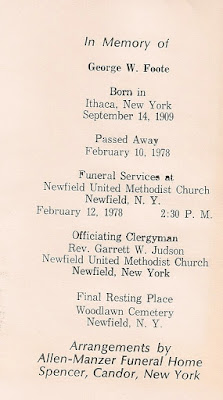We boarded the VRE
(Virginia Railway Express) train to Union Station at 7:51 a.m. at Leeland
Station, just north of Fredericksburg. We planned to catch this train, not
realizing that the VRE was on their “S” schedule (S meaning “Snow” and/or
Holiday schedule), and neither did a number of regular commuters waiting there
to catch an earlier train into work. A lot of sighs … But we did learn about
the green dot meaning a train is headed our way.
After arriving at Union
Station in DC, we quickly trotted (it was cold and windy) a number of blocks to
the NARA building, arriving there just before 10:00 a.m., their stated opening
time – or so we thought.
The doors were open and
we learned they actually open at 9:30 giving researchers time to fill out their
paperwork for the 10:00 a.m. records pull.
Since we were newbies, we
had to watch a PowerPoint presentation on NARA procedures, and then waited in
line to get a photo ID card made. We filled out our forms and got them in the
designated wooden box for the 11:00 a.m. pull. The NARA website used to have a
very informative video on what to expect when arriving at the archives.
Difficult to locate on their site before, now impossible, and I suspect it has
been taken off and replaced by the PowerPoint.
We found the lockers
where we stashed our coats, and in walking back to the main section, one of the
archive staff approached me and said my ancestor’s records were now on Fold3.
We went to one of the computers and she immediately brought up the Widow’s
Pension record for Amos L. Tucker. I reviewed the pages while hubby went through the
(agonizing) process of getting money on his card so that we could print the
documents I needed.
The small café in the
basement of NARA is delightful. Hubby had a cheeseburger, and I had a delicious
ham wrap, and much needed water!
We arrived in research room 203 just moments before hubby’s documents
arrived at noon. Those files provided
us limited success.
The elusive John Pye that
hubby has been searching for a friend remains elusive. The poor guy was shot in
the face and had half his face torn off. He must have been in terrible shape
and much pain. The end of pension paperwork that should be there is presumable “lost,” according to NARA personnel. The
last paperwork in the file was dated 1873. We did get the name of the attorney
who was receiving the pension checks on Mr. Pye’s behalf – George C. Carter of
Utica, New York. And we found out that Mr. Pye was living in Adams, Jefferson
County, NY. These are some clues
our friend can follow up on to try for date/place of death.
Hubby needed parents’
names for the other two folks he was researching – neither file included those,
but for one, a wife and son are named. That was helpful.
The NARA staff were all delightful and ever so helpful, and for that we are so appreciative.
To top off our day, we
had the most delicious milkshakes from the Sugar Factory at Union Station while
we waited for our 3:25 p.m. train back to Fredericksburg.












